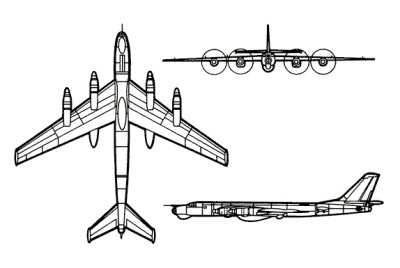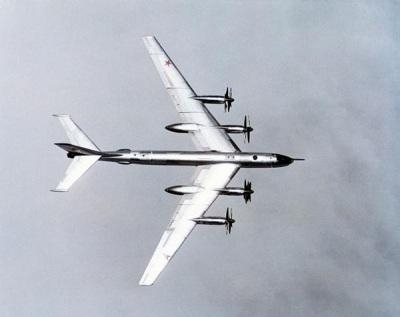War’s Coursing Dogs
Two explosions, possibly attributable to Ukrainian suicide drone strikes, reportedly damaged a pair of Russian Tupolev Tu-95 bombers at Engels Air Force Base, a major bomber complex east of the Russian city of Saratov.

The blasts claimed three lives and caused six injuries. Engels Air Force Base lies approximately 259-nautical-miles northeast of the Russo-Ukrainian border, and houses the Russian Air Force’s sole contingent of Tu-160 strategic bombers. The base is home to the 121st Guards Heavy Bomber Aviation Sevastopol Red Banner Regiment, which operates the Tu-160M; and 184th Heavy Bomber Aviation Regiment of the 22nd Guards Heavy Bomber Aviation Donbas Red Banner Division, which operates the Cold-War-era Tupolev Tu-95 bomber.
Ukraine did not directly claim responsibility for the explosions—though Ukrainian presidential adviser Mykhailo Podolyak intimated his nation’s culpability in a tweet reading:
"The Earth is round—discovery made by Galileo. Astronomy was not studied in Kremlin, giving preference to court astrologers. If it was, they would know: if something is launched into other countries' airspace—sooner or later, unknown flying objects will return to departure point."
Kremlin spokesman Dmitry Peskov advised reporters on Monday, 05 December 2022 that the only information he had pertaining to the explosions had come from media reports, and that he could not comment further on the incident.

Acting Governor of Russia’s Saratov Oblast Roman Busargin remarked on the Telegram instant messaging service that law enforcement was looking into "incidents" at military facilities. "I want to assure you that no emergencies occurred in the residential areas of the city," Busagrin wrote. "There are no reasons for concern. No civilian infrastructure was damaged."
Hours after the explosions were reported, Russia’s Defense Ministry issued a statement blaming Ukrainian drones for the explosions at both bases. The statement put forth that Russian air defenses had intercepted and shot down the drones as they flew at low altitude—but two aircraft had been slightly damaged nonetheless.
The ministry further conceded that three Russian military personnel had been killed in the attack.

The Tupolev Tu-95—known in NATO parlance as Bear—is a large, four-engine, turboprop-powered strategic bomber and missile platform. Designed by the Tupolev Design Bureau in the early 1950s and first flown in 1952, the Tu-95—of which more than five-hundred were built—didn’t see combat until 17 November 2015, when Tu-95s carried out long-range airstrikes as part of Russia’s military intervention in the Syrian Civil War. Modified iterations of the Tu-95 have served Mother Russia as maritime patrol aircraft and passenger airliners.
By dint of its four, 15,000-shaft-horsepower Kuznetsov NK-12 engines and their respective sets of contra-rotating propellers, the Tu-95 enjoys the distinction of being the world’s fastest propeller-driven airplane. The bomber’s uniqueness is further instantiated by the 35° sweep of its wings and the deafening shriek it looses as the tips of its spinning propeller blades exceed the speed of sound, thereby occasioning a perpetuity of sonic booms.
 Aero-News: Quote of the Day (12.09.25)
Aero-News: Quote of the Day (12.09.25) ANN's Daily Aero-Term (12.09.25): High Speed Taxiway
ANN's Daily Aero-Term (12.09.25): High Speed Taxiway ANN's Daily Aero-Linx (12.09.25)
ANN's Daily Aero-Linx (12.09.25) NTSB Final Report: Diamond Aircraft Ind Inc DA20C1 (A1); Robinson Helicopter R44
NTSB Final Report: Diamond Aircraft Ind Inc DA20C1 (A1); Robinson Helicopter R44 ANN FAQ: Q&A 101
ANN FAQ: Q&A 101





